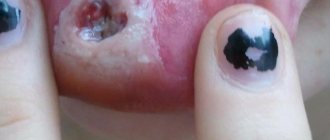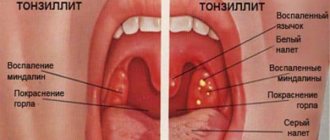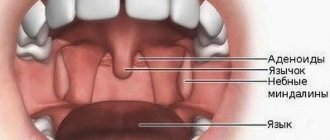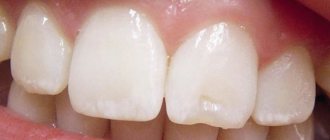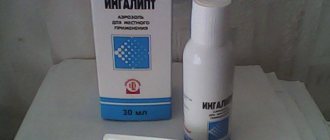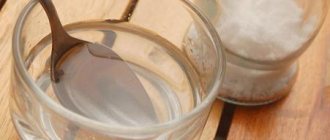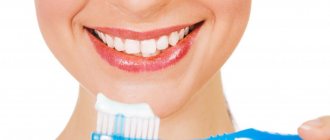Stomatitis is a general name for various types of inflammation of the oral mucosa. There are many diseases that cause inflammatory and purulent processes, diverse in etiology: viral, bacterial, infectious, fungal, and others. Each of them requires a specific medical complex treatment method, so only a doctor can prescribe methods of getting rid of them.
Manifestation of stomatitis
If pimples, blisters, ulcers, or red spots appear in your child’s mouth, immediately call a pediatrician, he will determine the nature of the disease. Advanced stomatitis is very difficult to cure; with insufficient exposure, severe complications arise.
Doctors often prescribe an aqueous 1% methylene blue solution for children and adults to disinfect the oral mucosa for aphthous stomatitis, thrush (fungal disease), and herpes (viral infection). This antiseptic, practically harmless to the human body, instantly destroys pathogenic microorganisms, dries, heals, and restores damage to the mucous membrane.
You cannot apply methylene blue solution before a doctor’s examination, such an action will lead to an insufficiently clear picture of the disease, consequently, to incorrect diagnosis, and insufficient further treatment!
What is methylene blue
An aqueous solution of methylene blue is a synthetic antiseptic that has been used externally in dentistry for a long time to treat stomatitis, gingivitis, caries, and periodontitis.
It is also used to treat abscesses, burn wounds, trophic ulcers, bacterial, viral, fungal mold diseases. For nursing mothers, medical blue is recommended for the purpose of disinfecting pathogenic bacteria and fungi in cracked nipples, which protects babies from getting thrush.
Oral administration - for diagnosis and treatment of diseases of the genitourinary system. Occasionally used in the treatment of neuralgia. Effectively used for poisoning. In veterinary medicine, the drug serves as a medicine for healing the mucous membranes of the mouth, ears and skin of animals. Elimination of fungal infections of aquarium fish.
A 1% aqueous solution has a pronounced blue color and permanently stains the surfaces of skin, fabrics, and others. When using, it is important to check individual tolerance. Do not allow the substance to get into your eyes. Available in ampoules, bottles, alcoholic, aqueous preparations and in the form of powders.
How to dye jeans blue
Blue, which is a mixture of starch and blue dye, is used in washing to lightly dye any fabric, including denim, to eliminate the yellow tint. At the same time, you should know how to dye jeans blue so as not to damage the fabric and in the future use your favorite jeans for their intended purpose.
1. First, you should buy blue, which is sold in absolutely any household chemical store in the form of powder or liquid, and when choosing, you should pay attention to its composition. This is because the dyes in bluing can be soluble or insoluble. Soluble aniline dyes, such as wool, methyl and methylene blue, are considered expensive, but insoluble blue, such as ultramarine, is cheaper. However, soluble dyes color the fabric more evenly, while insoluble dyes do the opposite.
2. In addition, you should know that some types of blue should be used during rinsing, while others should be used during the washing process. Therefore, before using this product, you should read the instructions.
3. Having decided on the blue, you should take it at the rate of 0.3 grams per kilogram of dry laundry, stir it in cold water, and then pour it into warm water, and the amount of water will depend on how rich the shade of the fabric is needed. It is necessary to dilute the blue until there are no clumps of this substance left.
4. Then, pre-washed jeans should be dipped into the bluing solution in a straightened form and left for the time specified in the instructions for this substance. As a rule, about two hours will be enough for jeans. After this, the jeans should be dried.
Beneficial features
The pharmacological effect of the alkaline drug is detrimental to many pathogenic microorganisms. The scope of application of the antiseptic is quite wide, thanks to its disinfecting and restorative properties:
The use of methylene blue as an antiseptic is due to the mechanism of its action: when it comes into contact with damaged infected cells of the body, the blue from stomatitis forms a poorly soluble strong compound with a foreign protein of the pathogenic microorganism, as a result of which the virus (bacterium, fungus) instantly dies.
Application for stomatitis
The drug is non-toxic because it is not able to penetrate blood vessels, so it is prescribed even to infants. Treatment of blue stomatitis in children is carried out by a pediatrician; on his recommendation, further examination by another specialist is prescribed.
Blue for stomatitis was popular 10-20 years ago. Therefore, now when a child is diagnosed with stomatitis, mothers and, especially, grandmothers often remember the bluing. Does blueing help with stomatitis? Let's figure it out together.
Possibility of side effects
Methyl blue, like any drug, has contraindications for use.
Methylene blue is not recommended for use in the following cases:
- individual intolerance or allergic reactions to one or more components of the drug;
- during pregnancy or breastfeeding, the drug can be used only if the benefit to the mother from use is greater than the possible harm to the baby;
- For stomatitis in a child under the age of one year, bluing should be applied carefully, pointwise and only with the permission of a doctor.
Since blue cannot enter the bloodstream, side effects can occur due to an overdose or due to the components of the drug itself.
Possible systemic manifestations include:
- headache;
- decreased appetite;
- skin allergic reactions;
- nausea or vomiting;
- anemia;
- disturbances in the functioning of the genitourinary system;
- psychological discomfort;
- disorders of the digestive system.
Experts note that the risk of negative reactions increases if large areas of the oral mucosa are treated.
If side effects occur, you should immediately stop using the drug. And in case of overdose of the drug, symptomatic treatment should be carried out.
Methods of application
- The alcohol solution is used only externally for pyoderma, chickenpox, herpes, and for treating wounds. It is not recommended to apply it to mucous membranes.
- A 1% aqueous solution of methylene blue can be used externally (applied to the skin) and topically (applied to the mucous membranes).
- 1% aqueous solution in 25% glucose solution for intravenous administration - administered intravenously slowly for poisoning with hydrogen sulfide, carbon monoxide, cyanides, aniline, nitrites, as an antidote.
- A 0.02% aqueous solution can be used to wash the urethra and bladder.
- Methylene blue powder is taken orally for cystitis and urethritis.
As can be seen from the above, an aqueous solution of blue can not only be applied to the mucous membranes, but even taken orally and administered intravenously, therefore blue is quite safe.
Blue has antiseptic properties, which means it kills harmful microbes in the oral cavity.
Therefore, blue can be used for stomatitis.
How to use?
- For stomatitis, only a 1% aqueous solution of methylene blue can be used.
An alcohol solution of bluing is not used for stomatitis, because it causes discomfort in the mouth, increases pain, and can lead to burns of the oral mucosa. - For stomatitis, a 1% aqueous solution of methylene blue should be applied to affected areas (ulcers, blisters, etc.) on the oral mucosa 5-6 times a day after meals.
- A 1% aqueous solution of methylene blue for stomatitis is approved for use in children from birth.
Blue against stomatitis
Before prescribing treatment for stomatitis, the doctor at the appointment must examine the affected oral cavity and establish a diagnosis. Then, depending on the severity of the disease, antipyretic, antiviral, and then treatment with medical blue is prescribed. The number of times the ulcers are treated with the drug also depends on how severe the stage of the disease is in the patient. Adults are usually prescribed treatment of the mucous membrane up to fifteen times per day.
, children can do less, but again the amount of treatment is prescribed directly by the doctor. You need to handle it carefully; to do this, you can take a cotton swab and spot-smear each wound.
Following the prescribed instructions, the wounds, as a rule, begin to heal within 3-4 days. Sometimes the doctor may recommend that after the course of treatment, treat the oral mucosa with medications for faster healing.
Methylene blue is produced mainly in the form of powder, 10 grams. in each sachet; in the form of a 1% alcohol solution in capsules of 10-15 ml and in the form of a 1% solution of blue in a 25% glucose solution, also in ampoules of 20-25 ml.
According to the instructions, methylene blue for various skin diseases is prescribed for external use in the form of a lubricant with a 0.5-3% alcohol solution.
For the treatment of limited neurodermatitis (a disease in which the patient has chronic itchy dermatosis), medical blue is prescribed as an intramuscular injection
in the form of a 2.5% solution of 2% novocaine for four days. The injection should be given no more than once a day.
In the treatment of genitourinary diseases, blue is used as a rinse directly for the urethra and bladder.
, if the patient’s inflammatory process has just worsened, then they are also prescribed to take the powder 0.1 g orally. several times a day.
Like any drug, methylene blue also has contraindications - this is an individual intolerance to one of the components
, included in the drug, and also cannot be used to treat diseases in young children under 1 year of age.
The drug can be prescribed to pregnant women if the expected benefit from the drug for the mother far exceeds the risk that is possible for the baby.
A solution of methylene blue in water is widely used to treat inflammation of the oral mucosa due to stomatitis. The product belongs to the group of antiseptics for topical use. Blue for stomatitis does not contain alcohol, so it does not burn the delicate mucous membrane of the mouth, has a minimum of side effects due to the lack of ability to be absorbed into the blood, and does not cause poisoning. Therefore, blue is used to treat stomatitis in young patients and pregnant women.
Blue is an anti-inflammatory agent that can be used in the treatment of lesions of the oral mucosa.
Why is bluing for stomatitis rarely used?
Modern pediatricians rarely prescribe blue for stomatitis, but in the past it was used often. Why? Because now new, more effective drugs have appeared for the treatment of certain forms of stomatitis.
Blue for herpetic stomatitis
In children, the most common type is herpetic stomatitis. This is a viral disease. Methylene blue has no effect on the herpes virus. It only protects the damaged oral mucosa from secondary infection by microbes. Therefore, for herpetic stomatitis, blue can be used only as an adjuvant in combination with antiviral drugs (Viferon gel, acyclovir, etc.).
Blue for thrush
The second most common form of stomatitis in children is fungal stomatitis or. Methylene blue also has no noticeable effect on fungi. For thrush, a solution of borax in glycerin and a Candida solution for the oral cavity are used.
Blue for bacterial stomatitis
Methylene blue will only be effective for stomatitis caused by microbes. This may be aphthous stomatitis or stomatitis that occurs after damage (wound) to the oral mucosa. For microbial stomatitis, methylene blue gives an excellent effect when applied frequently 5-6 times a day to lesions in the oral cavity.
Contraindications
Blue for stomatitis is contraindicated for those who have an individual intolerance or allergy to blue.
Disadvantages of 1% aqueous methylene blue solution
- Methylene blue in aqueous solution cannot always be found in a pharmacy. It can be prepared in the prescription department according to a doctor’s prescription, but the shelf life of such a solution is 10-14 days.
- If you have opened a commercially produced 1% aqueous solution of methylene blue, then its shelf life after opening the bottle is 10-14 days.
Is it possible to prepare a 1% aqueous blue solution at home?
Can. And it’s not even difficult. Dilute 10 g of powder (contents of 1 bottle of powder) in 1 liter of boiled or distilled water. Stir, strain through 4-6 layers of gauze. The solution is ready.
From all of the above, we can conclude that stomatitis blue can be used in children from birth, but only as prescribed by a pediatrician or dentist. Stay healthy!
Oral problems occur quite often in people. One of the common troubles is the appearance of white ulcers on the mucous membrane. This is stomatitis. It is imperative to fight it. What treatment methods do doctors offer? What is bluing from stomatitis? We will talk about this in more detail.
How to treat the oral cavity with blue?
Before using blue, you must first carefully read the instructions attached to it, which indicate that in order to treat stomatitis, an adult should treat the affected mucous membrane with this drug as often as possible.
Processing should occur about 15 times in 1 day. Remember that you need to treat the oral cavity exclusively with a 1% solution.
The medicine must be applied with a cotton swab or a cotton swab. Before starting to apply the drug, the oral mucosa should be thoroughly blotted from saliva with a special sterile material. By repeatedly applying methylene blue to the sores, the sores quickly begin to disappear.
But in order to completely get rid of the disease, an adult must continue to treat the cavity with special soothing agents. For this purpose, flax and sea buckthorn oils are used, as well as an oil solution containing vitamin A.
It is very important that after applying mytelene blue to the ulcers, drinking and eating for half an hour is strictly prohibited. With active use of the drug, the wounds will begin to heal after 3-5 days.
The duration of treatment depends entirely on the form of development of the disease, as well as concomitant ailments and the general condition of the immune system.
Considering that in the presence of this disease the patient’s body temperature increases significantly, the attending physician in this case prescribes some antipyretic drugs. But this is in no way a treatment for stomatitis, but only a general safety measure for the human body.
During treatment, the mucous membranes become bluish in color. But do not be alarmed, since methylene blue is washed out quite quickly.
It is important to note that treatment is effective only in the early stages of stomatitis.
Stomatitis and its symptoms
The name stomatitis comes from the Greek language. Stoma means mouth. Symptoms of this disease may be:
- the mucous membrane is swollen, covered with a white or yellow coating;
- white ulcers of varying sizes form in the mouth;
- body temperature is high, it is difficult to bring it down with medications;
- Gums may bleed;
- a pronounced unpleasant odor appears.
Weak, isolated manifestations of stomatitis can go away on their own in about a week. But it is better to consult a doctor, especially if a small child is suffering.
Treatment methods for stomatitis
Very often, the doctor tells the patient that bluing will help with stomatitis. But what is it? Are we really talking about the blue that grandmothers added to white paint when whitewashing ceilings? Of course not. This is not household blue, but methylene blue or iodide starch. We are talking about a strong antiseptic that neutralizes pathogenic foci. Blue for stomatitis is not the only drug that helps fight the disease, but it is rightfully considered the most effective.
In addition to bluing, pain-relieving applications for ulcers, rinses or antibiotics (if the condition is advanced) may be prescribed.
How to use the drug for adults
Since this disease causes a high temperature, the doctor prescribes antipyretics. But this is not a treatment for stomatitis, but general safety measures for the body. But blue for stomatitis is prescribed for treatment. The instructions for which indicate that an adult patient must repeatedly treat the affected area. Treatment is carried out up to 15 times a day. Please note: treatment is carried out with a 1% aqueous solution. Do not confuse it with alcoholic methylene blue.
Stomatitis bluing is applied with sterile cotton wool or a cotton swab. Before application, carefully blot the saliva with a sterile material.
With repeated exposure, the ulcers quickly disappear, but for complete healing, the adult patient must continue treatment with sedatives. This can be sea buckthorn, flaxseed oil or an oil solution of vitamin A.
Use in adults
As the instructions say, only damaged areas of the mucous membrane in the mouth and nearby healthy tissues are treated with an aqueous solution of methylene blue. The steps of the procedure are as follows:
- wrap a gauze swab around your finger or use a cotton swab;
- remove plaque from canker sores and ulcers using any antiseptic (for example, a weak soda solution) or rinse your mouth with antimicrobial herbal infusions (for example, sage, oak bark, St. John's wort);
- dry the surface of the mucous membrane;
- take a new tampon and soak it in the medicine;
- treat inflamed areas, ulcers, erosions, aphthae with a slight involvement of surrounding tissues.
The manipulation must be repeated 3 to 6 times a day until complete recovery.
After treating the mucous membrane, you should not eat or drink for half an hour. The course of treatment is determined:
- stage of stomatitis;
- the presence of background pathologies;
- state of the immune system.
Medical methylene blue in the form of an alcoholic liquid is prohibited for use for stomatitis due to the high risk of burns.
How to use blue for small patients
Blue is used differently than in adults. Let's start with the fact that children should not treat ulcers so often. This is done 4 times a day, after meals.
If stomatitis is caused by herpes, then the oral cavity can be treated up to 5 times. Only an aqueous solution can be used on mucous membranes.
To treat infants, blue for stomatitis is applied to the nipples of a nursing mother. This is done so as not to injure the baby’s delicate mucous membrane with a bandage, tampon or cotton swab.
Use in children
It is carried out in different dosages, which are determined by age:
- It is recommended that newborns and infants be treated no more than 3 times a day. To do this, bluing is applied to the baby's nipple or pacifier. This will avoid unwanted injury to the baby’s delicate mucous membranes.
- For young patients under three years of age, treatment can be carried out in the usual way, but not more than 4 times a day after finishing feeding. For herpetic stomatitis, you can use the product 5 times a day.
- For older patients, applications or rinsing of the mouth can be done.
Today we offer a convenient spray with a complex composition called “Iodinol”
Household blue is considered a mixture of dye and starch, sold in powder or liquid form. The substance is usually used as a bed linen freshener. Linen bluing allows you to make linen and cotton shirts white. It is also used for tinting materials. More details about this tool are described in the article.
Blue for linen is divided into 2 types: with soluble and insoluble dye. The second option is considered cheap; it is used only when refreshing products. Soluble - for dyeing clothes.
Medical experiment
In the mid-twentieth century, an experiment was conducted at one of the medical institutes in Russia. A group of 86 children from one and a half to ten years old was identified. The children had severe signs of stomatitis. 56 people had the aphthous form, 13 had the ulcerative form, and in 17 patients stomatitis arose as an allergy to medication.
The children were fully examined, and the causative agents of stomatitis were identified using laboratory tests. They all received topical treatment with methylene blue, but in different forms.
The younger group, which included children over one and a half years old, received a spray based on starch iodide. The middle group, aged two years and older, received treatment in the form of applications. Treatment was carried out daily, the first day in a medical facility, then at home.
The condition of children in the acute stage of stomatitis with high fever and enlarged lymph nodes after treatment with methylene blue improved on the third day, and recovery occurred on days 6-7. Children with a mild stage of stomatitis were completely healthy after three days.
At the same time, doctors observed a group of children who were prescribed antibiotic treatment for stomatitis at the clinic. The babies recovered on 9-10 days.
The experiment proved that treating stomatitis with bluing gives good results. "Aqueous solution of methylene blue" was recommended for use in children's clinics and hospitals. However, for some unknown reason, this drug never received the popularity it deserved. Young parents prefer newfangled means. And they look at inexpensive medicines from their mothers’ youth with distrust. Another thing that makes the drug less popular is the fact that it must be prepared in special pharmacies, while new drugs can simply be bought at any pharmacy outlet. However, only methyl blue, that is, medical blue, can offer high-quality antiviral, antibacterial, antifungal, anti-inflammatory and wound-healing effects in one bottle.
Jeans are an almost irreplaceable item for everyday wear, as they are versatile, comfortable and practical. But it happens that denim items lose their appearance after numerous washes, or the paint peels off on them. Don't rush to say goodbye to your favorite thing - you can give it a new look by painting it. Let's figure out how to dye jeans at home.
Denim is a natural material that can be easily given almost any shade.
Before choosing a method to update the color, you need to decide how to dye your jeans and what products to use.
To update your jeans at home, you can use the following products:
- The most common painting option is blue. This method is very simple, but the result will not last long.
- So-called boiled jeans can be obtained using potassium permanganate. In this case, the result depends on skill and experience, since the process is quite complex.
- You can purchase ready-made aniline dyes. By following the instructions on the package, you can quickly get the desired effect.
- To obtain a more durable result, acrylic paints are suitable.
- Jeans can also be dyed in the washing machine using powder dyes. The painting process is simple, but there is a small selection of shades available.
Blue
Affordable and inexpensive painting options include bluing. But, using this product, it will not be possible to radically change the color of the product; you can only make it blue.
Blue can be purchased at any hardware store.
How to dye jeans blue:
- Dilute the blue in water whose temperature is less than 30 degrees. The brighter the color you want, the more product you need to use. To get a lasting shade, you can add 2 tablespoons of salt to the solution.
- Place the jeans in the solution.
- Leave them for a couple of hours. To ensure uniform painting, the product must be turned over periodically.
- Rinse your pants in cold water.
- To fix the color, rinse them in a weak vinegar solution.
The resulting result will begin to wash off immediately after the first wash, so this method of painting cannot be called optimal.
Powder painting
Painting jeans with powder paints will not harm your washing machine.
Using powdered dye and a washing machine, you can dye your jeans black. To avoid unexpected results, do not add washing powder and fabric softener to the washing machine. Jeans need to be washed first.
How to dye jeans in the washing machine:
- turn the product inside out;
- place the jeans in the washing machine;
- pour coloring powder into the drum;
- set the washing temperature specified on the product label;
- start the standard washing program;
- take out the painted item and rinse in cool water;
- rinse your jeans in a vinegar solution;
- wash them in a washing machine with washing powder;
- dry.
The result of dyeing is a durable, bright color. You should not worry about the washing machine - the use of dye will not affect its functionality in any way. The maximum that can happen is painting the rubber seals. But this problem can easily be solved by wiping them with a damp cloth.
Acrylic paints
Using acrylic paints, you can apply any design to the fabric, which will help hide problem areas and make the item unique and inimitable.
The process will require acrylic paint, brushes of suitable sizes with stiff natural bristles, and an iron. After the design has been applied to the fabric, the product must be ironed from the wrong side.
But this method is short-lived, since after several washes the color of the paint will begin to fade, and may even begin to fade. Therefore, this method is not suitable for everyday items that are often washed.
Aniline dyes
Among textile dyes, aniline dyes are the most popular. This is due to its ease of use and lasting results.
To dye jeans, you need to boil them in a dye mixture with salt, stirring occasionally. Then rinse in vinegar solution and dry.
How to prepare jeans for blue dyeing
The first and most important tip is that jeans must be absolutely clean before painting. If there are any even minor stains on them, they will not only not be painted over, but will also stand out even more. If it happens that there are stains that cannot be removed, you should choose a paint two shades darker. Paint matched to the tone of the jeans will not cover the stain. Washed jeans should be dry. There is no need to iron them, just keeping them clean is enough.
We recommend reading: How to wash a cotton blanket at home: manually and in a machine
Alternative methods
Products such as hair dye and fabric dye work well with dyeing denim. You can use bleach from household products.
Hair dye
Hair dye is an alternative way to update dark jeans
You can update the color of dark products using hair dye. It is most convenient to carry out the painting process in a basin. Paint should be taken at the rate of 2-3 packages per pair of trousers.
How to dye jeans with hair dye:
- dilute the coloring composition in warm water;
- dip the product there;
- leave it for an hour;
- rinse your pants in water;
- prepare a solution of vinegar, salt and water and soak them for 2-3 minutes;
- dry the product.
Fabric paint
Dyeing jeans with fabric paint is not difficult, but this method requires boiling. An enamel bucket or large saucepan is suitable as a container for painting.
How to dye jeans blue with fabric paint:
- dilute the paint composition according to the instructions;
- soak the product in the coloring composition;
- put the container on the fire and boil, stirring occasionally, for at least an hour;
- take out the jeans and let them cool;
- rinse them in warm water, but not hot, then in cold water;
- place the trousers in the vinegar solution for 20 minutes;
- Wash the product by hand using washing powder.
White
By using whiteness, you can get jeans not just of a certain color, but with intricate patterns that appear as a result of cooking.
White painting process:
- Prepare 1 cup of bleach and dissolve it in water;
- twist the jeans tightly and secure;
- Place them in a container with bleach and boil for 15 minutes. During boiling, you need to ensure that they are completely immersed in the bleaching composition;
- take out the trousers and dry them.
Coloring
To stain with blue you need:
- Wash the item that needs to be dyed and rinse the powder until clear water.
- Dilute the blue according to the instructions. There should be no clumps of coloring matter in the water; it should be of a uniform color.
- Fill the bath with water for dyeing.
- Place the item in the bathroom. It is important that the fabric is evenly spread out (twisting, folding and bending may result in uneven dyeing - this is why it is recommended to dye in the bathtub and not in a basin or other container). The water should completely cover the item being painted. To lightly turn the linen blue, it takes a few minutes, to dye it – from 1 hour. For jeans, 2 hours is usually enough.
- Dry the fabric in a straightened state - the color may change in folds and creases.
Caring for painted products
After the jeans have acquired the desired look, the duration of their use depends on proper care.
Before washing, be sure to fasten all zippers and buttons and turn the product inside out.
For jeans, hand washing in warm water is recommended. Moreover, you cannot sprinkle washing powder directly on your jeans; it must be dissolved in water in advance. Also, do not use powder containing bleaching components.
To prevent the paint from washing out for a long time, you can use laundry soap instead of powder when washing.
If hand washing is not possible, you can wash the clothes in the washing machine on a delicate cycle.
If you follow simple care rules, your jeans will delight you with their appearance for a long time.
The product is available in three forms: powder, alcohol, water. To treat mucous membranes, only aqueous solutions are used. The absence of alcohol in the medicine allows it to be used not only for adult patients, but also for stomatitis in children.
Coloring
To stain with blue you need:
- Wash the item that needs to be dyed and rinse the powder until clear water.
- Dilute the blue according to the instructions. There should be no clumps of coloring matter in the water; it should be of a uniform color.
- Fill the bath with water for dyeing.
- Place the item in the bathroom. It is important that the fabric is evenly spread out (twisting, folding and bending may result in uneven dyeing - this is why it is recommended to dye in the bathtub and not in a basin or other container). The water should completely cover the item being painted. To lightly turn the linen blue, it takes a few minutes, to dye it – from 1 hour. For jeans, 2 hours is usually enough.
- Dry the fabric in a straightened state - the color may change in folds and creases.
The mechanism of action of bluing for stomatitis
The antiseptic methylene blue in the form of a solution quickly penetrates into tissues. At the same time, they acquire a characteristic color. The therapeutic effect is due to the ability of the active substance to bind to cells. At this moment, the production of insoluble compounds with proteins of pathogenic microflora occurs. Thus, blue inhibits bacteria and blocks the proliferation of harmful organisms.
The use of blue liquid for stomatitis does not cause intoxication, since the active components do not enter the circulatory system. With the destruction of pathogens, the infectious process stops.
What is medical blue
Blue (scientifically called methylene blue) is a drug that is widely used in medical practice. The main purpose of the drug is a local antiseptic used to treat the skin and mucous membranes. According to the instructions, you can use both an aqueous and an alcohol solution of the substance.
The pharmaceutical drug Methylene Blue is a starch-based compound that is capable of entering into a variety of chemical reactions, thereby providing:
- antibacterial effect - when interacting with the components of a microorganism’s cell, insoluble compounds are formed, the causative agent of the infection dies;
- antitoxic effect - when administered intravenously, blue acts as a sorbent that can help with poisoning by heavy metals, cyanides, and some dyes.
It is important to note that bluing, when applied to the skin and mucous membranes, is practically not absorbed into the systemic bloodstream. The drug, prescribed orally and intravenously, actively penetrates the blood and is broken down in the liver.
Composition of the drug: blue contains 0.01 g of methylene blue in 1 ml of solution (1%). The concentration of the active substance is the same in the aqueous and alcoholic forms of the drug.
Instructions for using bluing for stomatitis
A solution of methylene blue for stomatitis is approved for use by children and adults. Only a doctor should determine the method of treatment and duration of the course.
In doing so, it takes into account the following factors:
- stomatitis clinic;
- severity of the disease;
- patient's age.
Usually, during the acute and chronic stages, treatment of the entire area of the mucous membrane is prescribed. Single rashes can be applied to spots.
Instructions for using stomatitis blue for adults:
- Pre-treatment of the oral cavity involves removing white plaque. To do this, wrap your index finger with a sterile gauze pad and wipe the affected areas. The tampon must first be moistened in a soda solution (1 teaspoon per glass of water) or in sea buckthorn oil.
- If the doctor has prescribed treatment of the entire mucous membrane, then wipe it with a sterile cloth moistened with a blue solution. With the spot method, only the affected areas are lubricated with the medicine. Using cotton swabs, bluish the sores, grabbing some healthy tissue around the wounds.
- Doctors recommend that adult patients undergo procedures at least 10 times a day. In some cases, treatment of wounds with blue is prescribed every 1–1.5 hours (but no more than 15 times a day).
Stomatitis requires an integrated approach to treatment. Along with blueing, patients are prescribed antipyretics, antiviral and immunomodulatory drugs. Switching to a gentle diet will speed up recovery.
If you follow all the rules for using bluing, relief occurs within 3–4 days. The course of treatment for acute stomatitis is a week. And the chronic stage requires longer treatment (up to 20 days).
The instructions for treating blue stomatitis in children are somewhat different. Let's consider the algorithm of actions:
- Only a doctor should prescribe the use of the drug. First of all, the child is shown to a pediatrician or dentist. Having determined the type of pathogen, the doctor selects effective therapy. The fact is that blue itself is capable of destroying only bacterial forms of stomatitis. Viral pathogens are neutralized with appropriate drugs. In this case, blue acts as an auxiliary medicine.
- Before using the drug, it is necessary to remove white plaque from the affected areas. Do this in the same way as described above. When removing plaque, change tampons frequently.
- Antiseptic liquid is applied pointwise in childhood using cotton swabs. Children under 6 years old are prescribed 2 procedures per day. Older children are allowed 4 treatments per day. Taking into account individual characteristics, the doctor may prescribe a different number of procedures.
- In infancy, treatment with cotton swabs is not recommended. It is better to apply a few drops of blue to the mother's nipple before feeding. The number of procedures per day is prescribed by the doctor.
Recovery can only be achieved with daily use of the drug. If you follow all the doctor’s recommendations, wound healing occurs already on the 3rd day. Full recovery occurs within 6–7 days. Chronic stages of stomatitis require longer use of blue (14–21 days).
Important
- Blue is needed for those who prefer simplified processing methods to a variety of toxic bleaching powders.
- A high-quality product does not stain containers or the skin of your hands.
- Blue is not a permanent dye. Each subsequent wash will wash out the color pigments, so re-blueing should be done from time to time.
- To obtain a good result, each item must be processed separately.
- Table salt added along with the blue when rinsing will help keep the blue color longer.
- To achieve the desired result, it is better to first practice on old things.
- Always read the instructions for use of the dye, because depending on the manufacturer, release form and composition, dyeing may have different results.
- Blue blue, which contains starch, should be boiled after dilution and then strained.
- Do not try to replace the bluing with a blue item of clothing when washing white clothes in the machine, as this may lead to unpredictable results.
- The chemical should be stored in a tightly closed container out of the reach of children.
Blue is a fairly cheap substance that can replace many expensive powders with a whitening effect. It is also an indispensable product for adding freshness to linen and richness to blue and blue clothes. Also, such a simple, popular substance as blueing can serve as a source of inspiration for creating unusual shades or patterns when dyeing.
Possible side effects
Blue from stomatitis during treatment rarely causes unpleasant consequences. Due to the peculiarity of the drug not to be adsorbed by the bloodstream, adverse reactions occur only against the background of individual intolerance or overdose.
Having noticed systematic manifestations of the following symptoms, it is necessary to urgently stop treating the mucous membrane with blue:
- Dizziness or migraines.
- Nausea, vomiting.
- Manifestation of psychological discomfort (feelings of anxiety, nervousness, tearfulness).
- The functioning of the genitourinary system is disrupted.
- Gastrointestinal dysfunction.
It is also necessary to prepare for the fact that bluing due to stomatitis stains the teeth and lips in a characteristic color. Therefore, during the treatment the aesthetics of the patient’s appearance will be compromised.
Research and many years of practice prove the effectiveness of methylene blue for stomatitis. In most cases, it is possible to achieve recovery faster when compared with therapy with antibacterial drugs. In addition, the price of the medicine is quite affordable, which makes it accessible to all segments of the population.
Features of the drug
The main active component of medical blue is methylthionium chloride. An additional substance is distilled water.
The mechanism of action lies in the ability of the antiseptic to combine with pathogenic bacteria and neutralize their harmful effects. As a result, all harmful microbes are destroyed in the oral cavity.
Methylene blue solution
Blue for stomatitis (reviews of the effectiveness of the drug are quite impressive) is applied topically to damaged skin (including the mucous membrane), and since it does not penetrate the blood, it cannot cause toxic poisoning. This means that the liver and other organs cannot be damaged.
Methylene blue for stomatitis is used in the form of a 1% aqueous solution, which does not cause an unpleasant sensation in the mouth and does not lead to burns of the mucous membrane.
Due to its bright blue color, the drug has coloring properties. Therefore, medical bluing has a targeted use, and it is recommended to use gloves when handling.
